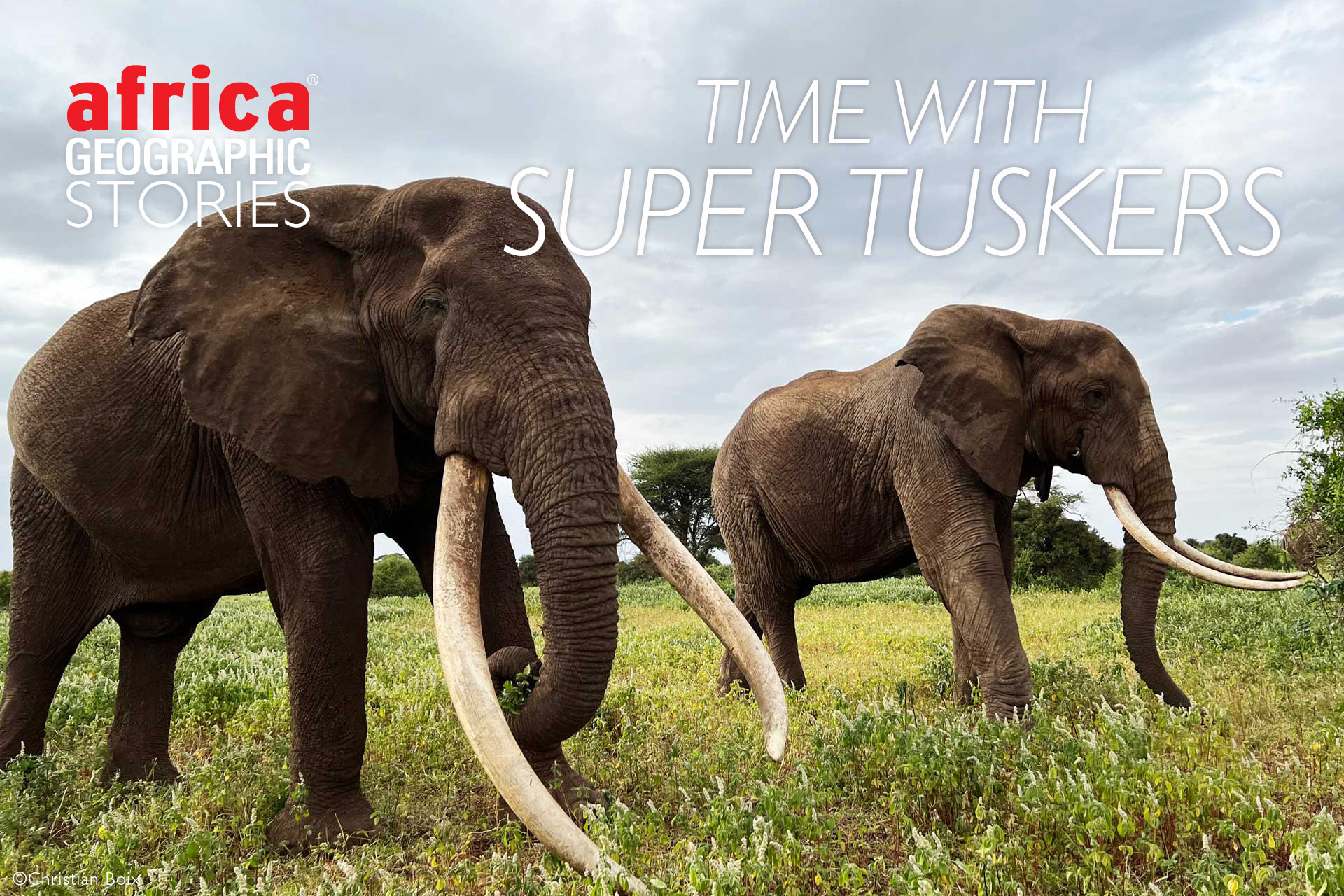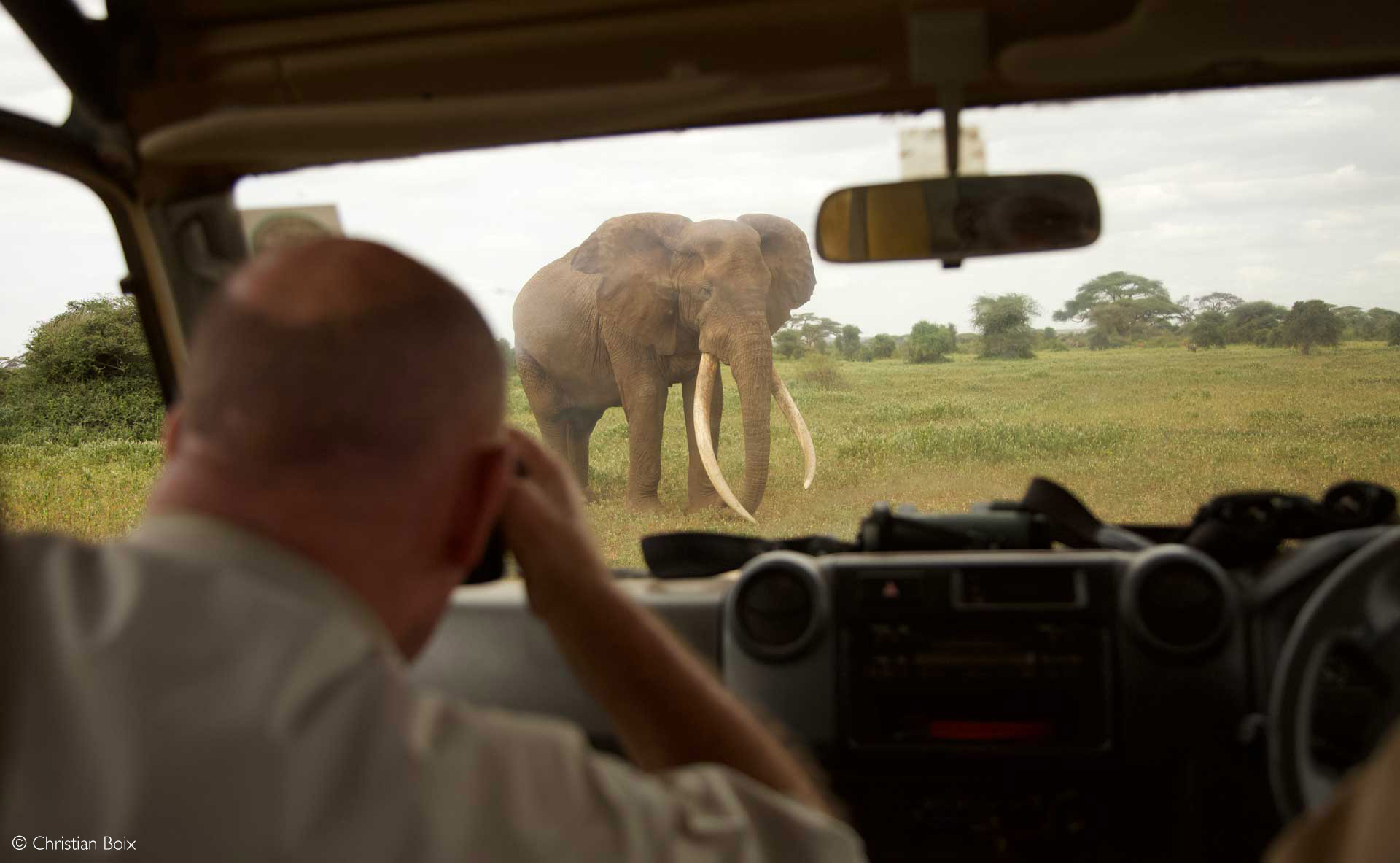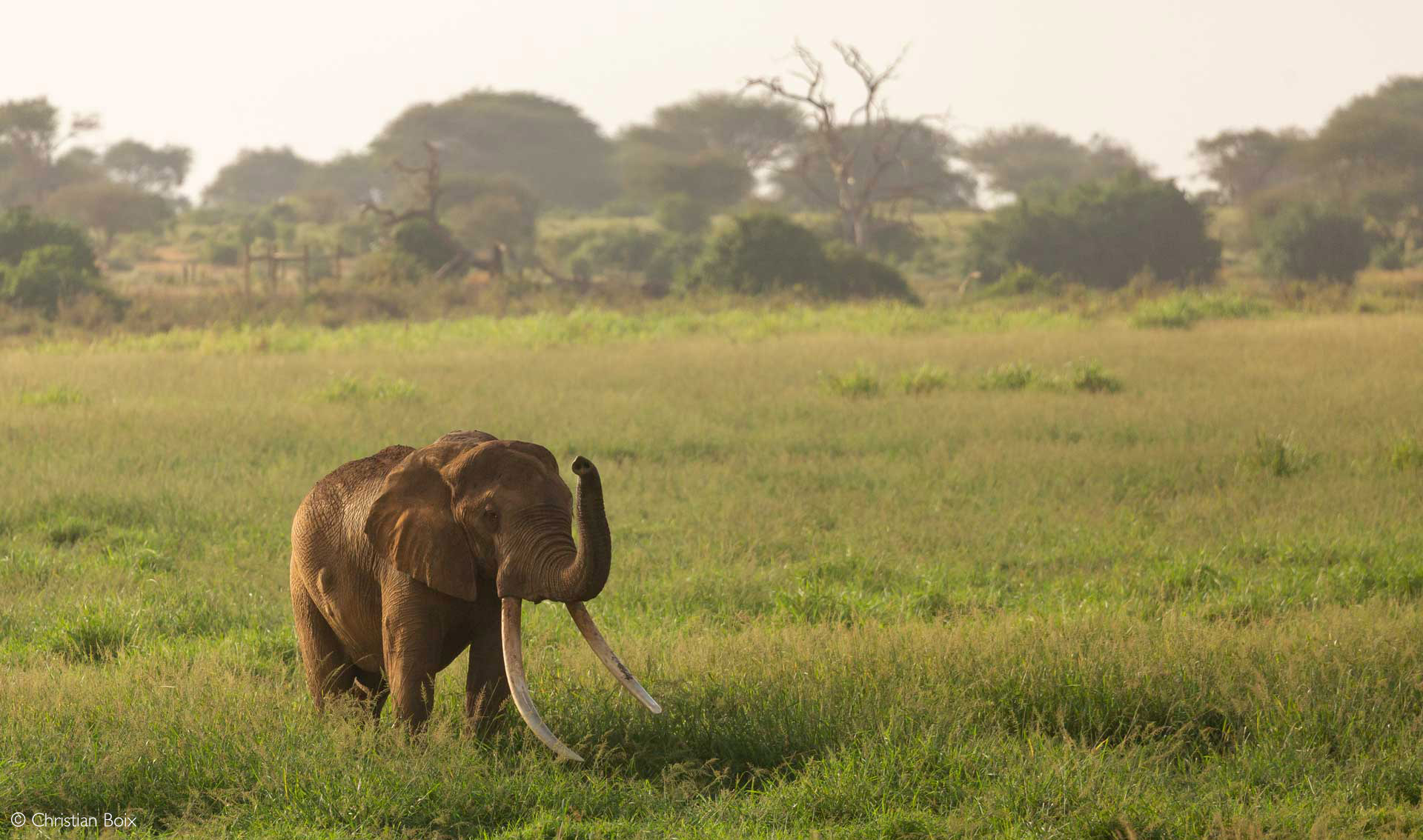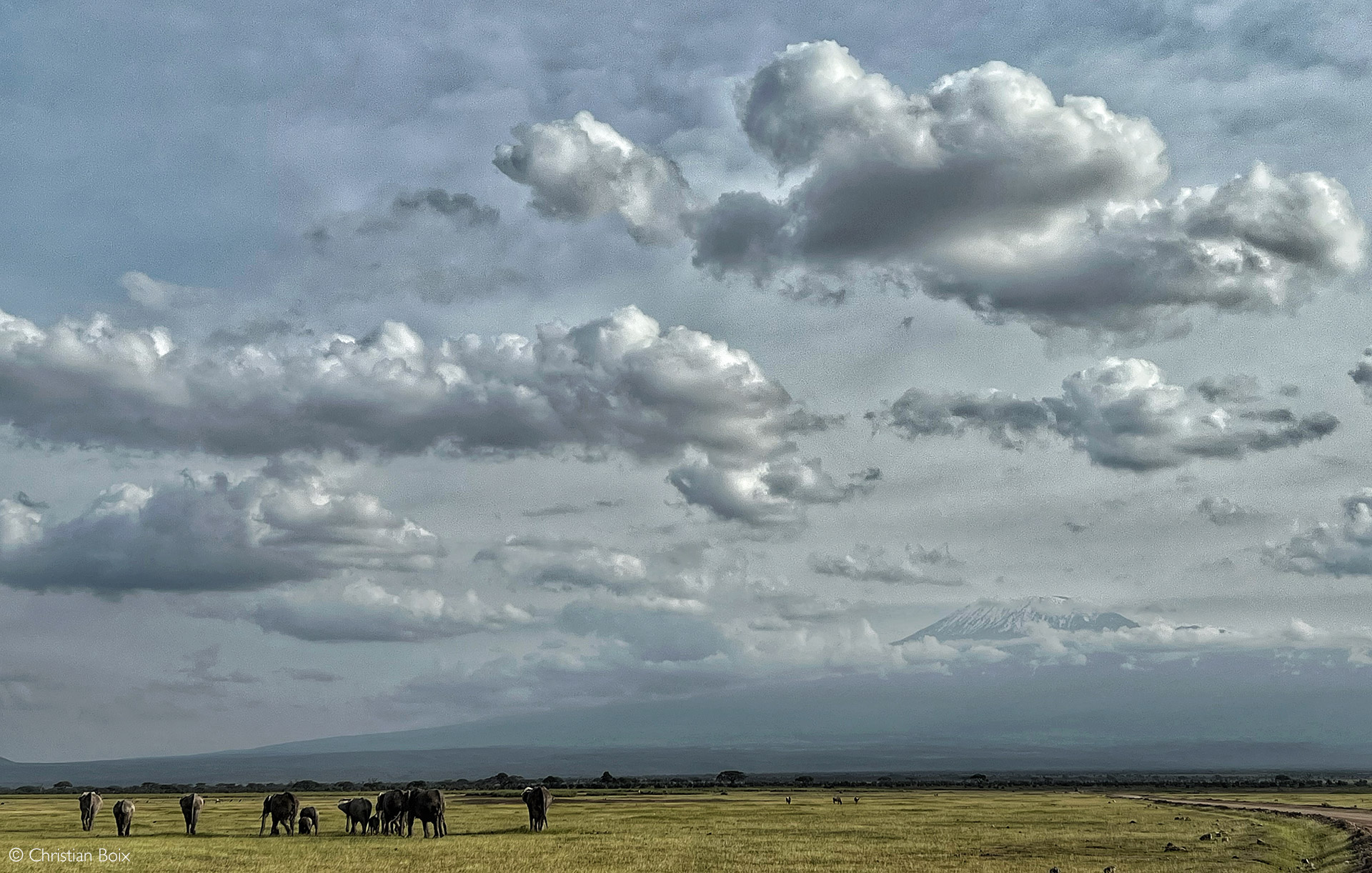
Seeking tuskers in Tsavo and Amboseli


They are the fabric of legend, and not even the simmering anticipation from days of searching can prepare seekers for the moment of finally finding one. They are the super tuskers of Africa – the last rare relics of an era long forgotten. But coming face to face with a super tusker is not always a guarantee – although it is always a highlight for even the most seasoned traveller.
Our very own safari director Christian Boix and safari client Roger Whittle recently set off on an odyssey to Amboseli and Tsavo East National Parks – known for their impressive herds of elephants – in the hopes of photographing the tuskers. Through dogged determination, they finally found what they were looking for.

Home to giants
Tsavo has the last notable population of big tuskers in the whole of Africa. Once a common sight, roaming far and wide across East, Central and Southern Africa, big tuskers have almost been wiped off the African continent – a combined result of trophy hunting, large-scale exploitation of ivory in the nineteenth and early twentieth centuries, and devastating poaching.
But thankfully, the last remaining tuskers are given their best chance for survival in Tsavo, where elephants are closely monitored for protection against poaching and injury. The Tsavo Trust’s Big Tusker Project, in collaboration with Kenya Wildlife Services, provides aerial and ground support to collect data and respond to imminent threats to the living legends. This ongoing presence is a significant deterrent to poachers and other illegal activity.
Today, nine giant bull tuskers remain in Tsavo. There are also 27 emerging tuskers and four iconic cow tuskers on the Tsavo Trust and KWS Tusker database – which is why visitors have the best chance of seeing some of Africa’s biggest tuskers there.
Stained red by the rich soils of the Amboseli-Tsavo ecosystem, the living legends make for a striking image against the towering backdrop of Mount Kilimanjaro – attracting photographers from across the globe.


Spotting a super tusker
Finding the super tuskers does not always come easily, and it always helps to be accompanied by more experienced seekers. It was only after a few days of searching and with a dash of luck that Christian and Roger were successful. “We found them through dogged determination. We followed up on all the latest sightings and other leads. We gambled on where we thought their feeding habits might lead them. And after days of seeking bull groups, searching from morning until evening, we finally found what we were looking for.”

The party had the privilege of meeting three super tuskers on their journey. Craig, a 50-year-old gentle giant of Amboseli, is a well-loved favourite in the area. Ulysses, also one of the larger super tuskers of Amboseli, once survived a deep spear wound that was treated by vets – and was, therefore, a remarkable sighting for the duo. The party then spotted super tusker MK2 in Tsavo East.
“Craig was surrounded by an entourage of well-aged bulls. They all stuck around and stayed alert – though not fearful – when they noticed us. Each elephant took turns to sniff and check on the old man,” says Christian. And they weren’t the only ones tailing Craig. “KWS scouts were in attendance – they have a tough job keeping tabs on the safe whereabouts of each Tusker in the area.”


While the specific locations of super tuskers are always kept under wraps, Christian says seekers will “do well to visit Satao Elerai in Amboseli and Satao Camp in Tsavo East, which serve as excellent bases from which to find the legends”. Here, visitors can spend much time on safari with knowledgeable guides who have worked in the area for years. Satao Elerai also offers night game drives in the conservancy, which not all lodges in the area do.
And what to do after finally snapping a legend? “Book our next trip!” says Christian. “Roger could not get enough of my almost fanatical obsession to track down a target!”
Want to go on an African safari to seek super tuskers? To find lodges, search for our ready-made packages or get in touch with our travel team to arrange your safari, scroll down to after this story.
Resources
Christian and Roger visited Satao Elerai and Satao Camp as their bases for searching for the super tuskers.
You can learn more about Tsavo Trust here.
You can also join us as we walk with the giants of Tsavo East on a 13-day adventure, where we follow elephant herds over an 80km walking route along the Galana River.
 WATCH: Meet Craig – super tusker (0:36)
WATCH: Meet Craig – super tusker (0:36)
To comment on this story: Login (or sign up) to our app here - it's a troll-free safe place 🙂.![]()






